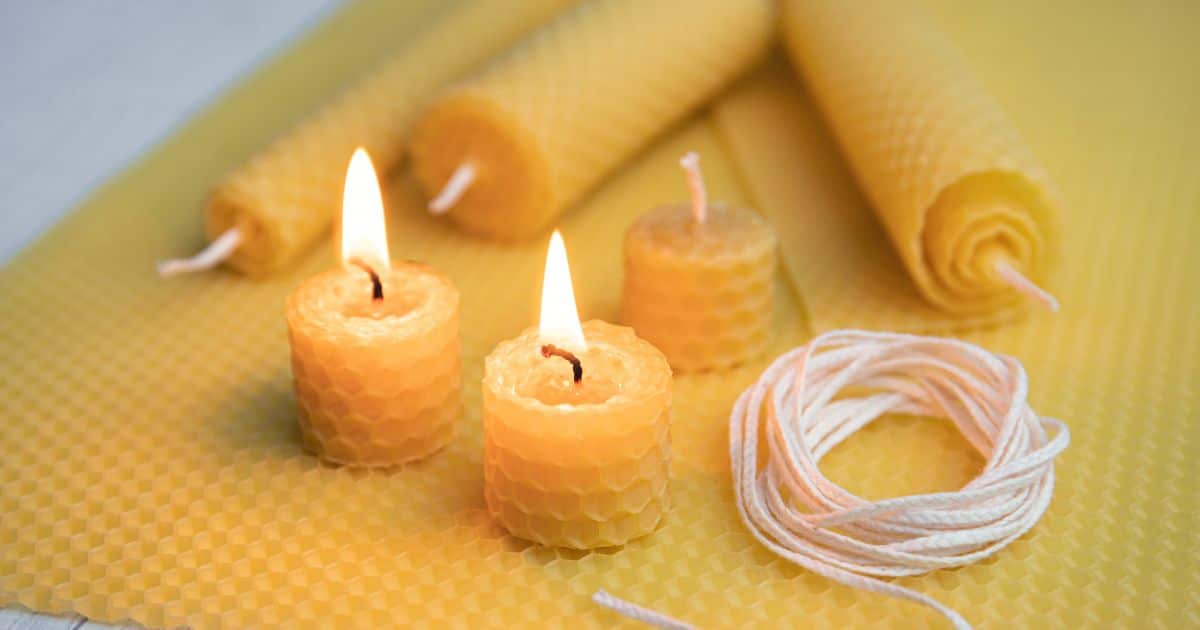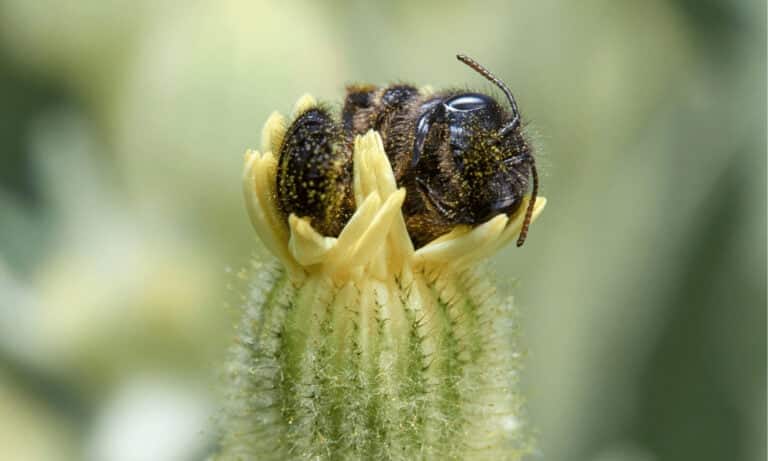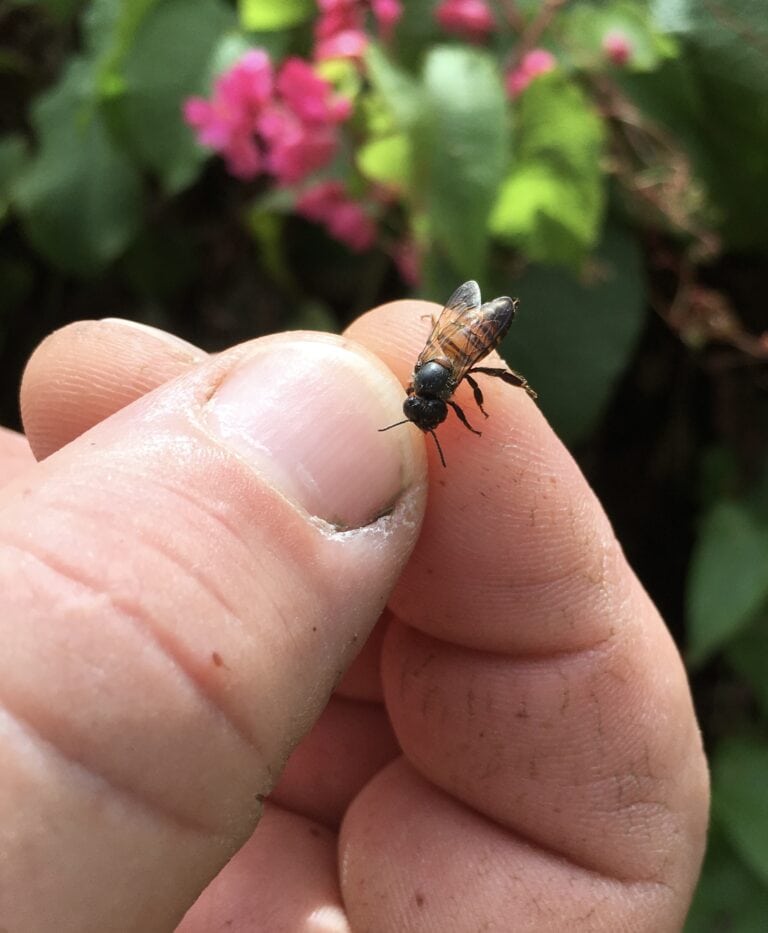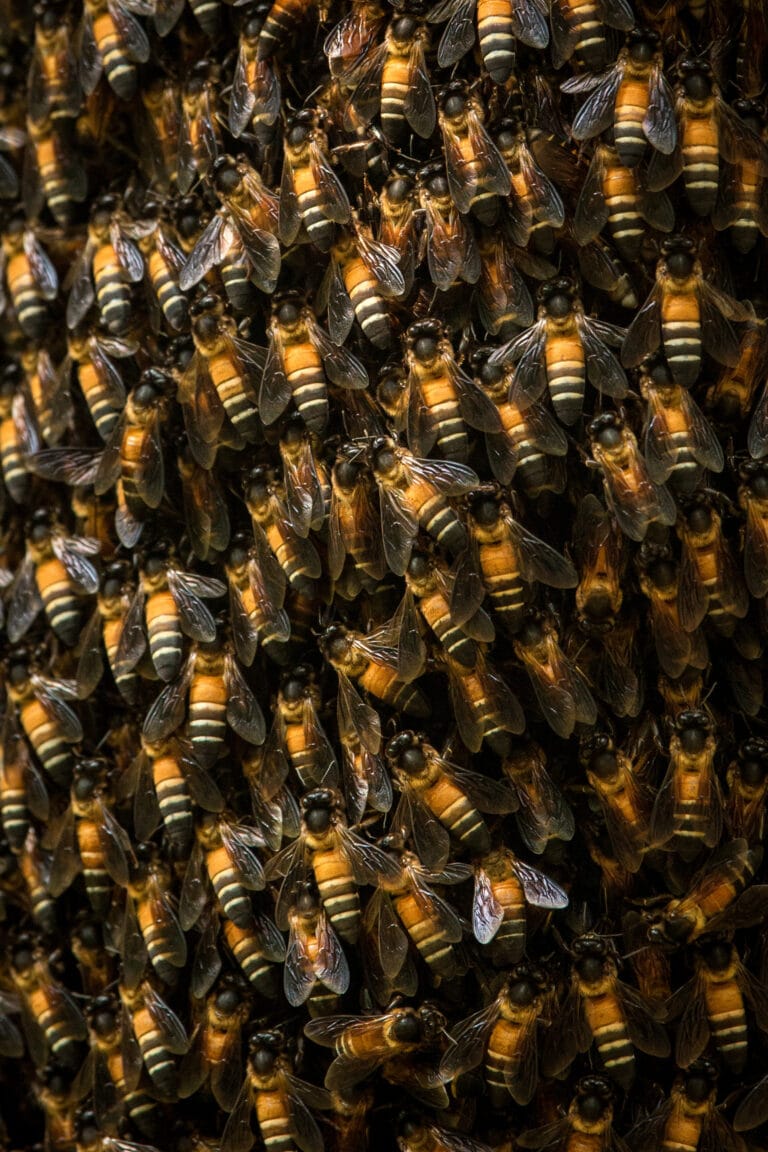Beeswax Candles: The Ultimate Guide
The ultimate guide to beeswax candles. What’s better, beeswax or soy? What candles burn longer? Find out!

When buying candles, there are more things to consider than ever before. For example, some candles contain toxins harmful to humans and our beloved pets. Wondering if they’re safe to burn in our homes is understandable.
Below, I’ve compiled the frequently asked questions I receive about beeswax candles so you can make an informed decision when purchasing any kind of candles.
Are beeswax candles really better?
Beeswax candles offer many advantages over traditional paraffin candles, making them a preferred choice for many consumers.
Their main benefits are:
#1: Beeswax candles burn cleaner
Firstly, they burn cleaner, producing minimal soot and releasing no toxic by-products, ensuring better indoor air quality.
#2: Biodegradable and environmentally friendly
Their natural composition is biodegradable and environmentally friendly, unlike petroleum-based paraffin candles.
#3: Longer burn time
Beeswax candles also have a longer burn time due to their high melting point, providing more value for money.
#4: Sweet, honey smelling
They also exude a subtle, sweet aroma when lit, derived from the honey and flower nectar collected by bees.
#5: Beeswax candles emit a more natural light
Beeswax candles emit a brighter and warmer light that closely resembles natural sunlight.
All these factors combined make beeswax candles a superior and sustainable choice for illumination and ambience.
What are the disadvantages of beeswax candles?
While beeswax candles have many benefits, they also come with certain disadvantages.
#1: Typically more expensive
They are typically more expensive than paraffin or soy candles, making them less accessible for some consumers.
#2: Consistency is more challenging for DIY
Their harder consistency can make them more challenging to craft, especially for DIY enthusiasts.
#3: Variations in colour and scent
Due to the natural composition of beeswax, there might be slight variations in colour and scent between batches.
Lastly, there could be concerns about potential reactions for individuals with bee-related allergies, although such instances are rare.
Do beeswax candles really clean the air?
Beeswax candles are often lauded for their air-purifying qualities.
The belief is that as they burn, they release negative ions, which can bind with positive ions, like dust, pollen, and pollutants, causing them to fall to the ground, thus reducing airborne contaminants.
However, while negative ion generation sounds appealing, concrete scientific evidence supporting the notion that beeswax candles significantly purify indoor air is limited.
While they undoubtedly burn cleaner than paraffin candles and don’t release toxic by-products, claiming they actively ‘clean’ the air might be an overstatement.
It’s safer to say they are a healthier burning option with potential air-quality benefits.
Which is better – beeswax or soy candles?
Both beeswax and soy candles have their merits. Choosing between them often boils down to individual preferences and priorities.
Beeswax candles burn cleaner, last longer due to their higher melting point, and emit a natural, subtle honey scent. They also produce a brighter flame that resembles sunlight.
Soy candles, on the other hand, are typically less expensive than beeswax and are made from renewable, biodegradable resources. They burn evenly and slowly, producing minimal soot. However, it’s crucial to ensure that the soy is sourced from non-GMO crops to avoid potential pesticide residues.
If you prefer a more natural aroma, longevity, and brightness, beeswax is for you.
Do beeswax candles have toxins?
Beeswax candles are considered one of the cleanest burning candles and are free from the toxic by-products often associated with paraffin candles.
Pure beeswax naturally emits a faint honey-like aroma when burned and does not produce toxic soot or harmful substances.
However, it’s essential to ensure the beeswax is pure and unadulterated. Some candles might be labelled as ‘beeswax’ but only contain a small percentage of beeswax mixed with other waxes, potentially introducing toxins.
Additionally, the wick and any added fragrances or dyes can influence a candle’s overall toxicity.
To ensure a toxin-free experience, it’s best to choose 100% pure beeswax candles with a cotton wick and no artificial additives – just like you’ll find in the Ben’s Bees store.
Are 100% beeswax candles safe?
In the world of candles, not all are created equal.
Many individuals have turned to 100% beeswax candles in the quest for natural, toxin-free options.
But are they truly safe?
At the heart of the matter, 100% beeswax candles are among the safest and cleanest burning candles available.
Unlike paraffin candles, which are derived from petroleum and can release harmful chemicals like benzene and toluene when burned, beeswax candles are natural and emit minimal soot.
Their natural composition ensures that they do not produce toxic by-products, making them a healthier choice for indoor environments.
Moreover, pure beeswax naturally exudes a faint, pleasant honey-like scent when burned, eliminating the need for artificial fragrances that sometimes contain phthalates or other harmful compounds.
This inherent aroma is delightful and free from synthetic additives that might pose health risks.
However, while the beeswax itself is generally safe, consumers should be mindful of a couple of factors.
The wick is a critical component; choosing candles with lead-free, cotton wicks is advisable. Some older candles or those from unreliable sources might have wicks containing lead, which releases toxic fumes when burned.
Furthermore, while the natural colour of beeswax ranges from white to deep yellow depending on its processing and the flowers the bees have pollinated, some candles may be dyed for aesthetic reasons. It’s essential to ensure that any dyes used are non-toxic.
To sum it all up, 100% beeswax candles are a safe and eco-friendly choice, especially when compared to their paraffin counterparts. As with any product, consumers should do their due diligence, checking for pure ingredients, and sourcing from reputable manufacturers to ensure they’re getting a genuinely safe and natural candle.
Can beeswax candles get mouldy?
Beeswax candles are a beloved choice for many due to their natural origins, pleasant aroma, and cleaner burn.
However, like any natural product, a question that occasionally arises is: can beeswax candles get mouldy?
The simple answer is yes, but it’s relatively rare.
Beeswax itself is naturally resistant to bacteria and mould due to the presence of propolis, a resinous mixture that honeybees produce.
This propolis acts as a preservative, giving beeswax its inherent longevity.
However, under specific conditions, even beeswax candles can develop mould.
Factors contributing to mould growth include:
- Storing beeswax candles in damp or humid environments
- Prolonged storage in an unsuitable environment
- Contamination – especially with organic matter like food particles
To prevent mould growth on beeswax candles, make sure you:
- Store the beeswax candles in a cool, dry place.
- Keeping your candles in a dry, well-ventilated space.
- Check your beeswax candles regularly if they are stored for a long time.
- Clean the candle’s surface before storing it, ensuring it is free from dust or other organic contaminants.
In the rare event that a beeswax candle does show signs of mould, it’s generally best to discard it to avoid potential health risks associated with mould exposure.
However, if the mould is superficial, some gently scrape off the affected area and burn the candle in a well-ventilated space.
While beeswax candles can potentially get mouldy, with proper care and storage, they can remain pristine and ready to light up your space with their warm glow for years to come.
How long do beeswax candles last?
Beeswax candles have gained immense popularity not only for their natural origins and pleasant aroma but also for their impressive burn time.
But exactly how long do beeswax candles last compared to their counterparts?
One of the standout features of beeswax candles is their extended burn time. Generally, beeswax candles burn at a rate of 2 to 3 hours per inch in diameter.
For example, a candle that’s 2 inches (5cms) in diameter can last anywhere from 4 to 6 hours per inch of height. This makes them longer-lasting than many other types of candles, such as paraffin or soy.
If we’re talking about shelf life, beeswax candles have an incredible shelf life.
When stored correctly – in a cool, dry place away from direct sunlight – they can remain pristine for years. Their natural composition, including propolis, helps resist degradation and rancidity.
As mentioned earlier, while beeswax candles inherently have a longer burn time, certain factors can influence their lifespan. The quality of the wick, the presence of additives or dyes, and even the airflow around the burning candle can impact how long it lasts.
A properly trimmed wick and a draft-free environment ensure an even and prolonged burn. Compared to paraffin or soy candles, beeswax typically emerges as the front-runner in longevity.
Paraffin candles burn relatively quickly, while soy candles fall somewhere between paraffin and beeswax in terms of burn time.
Beeswax candles offer exceptional value in terms of longevity. Whether you’re lighting them for ambience, spiritual practices, or merely to bask in their natural glow, you can expect a prolonged and clean burn, making them a favourite for many candle enthusiasts.
Why does the Catholic church use beeswax candles?
The use of beeswax candles in the Catholic Church is steeped in tradition, symbolism, and reverence, tracing its origins back to ancient practices.
But why has the Church consistently chosen beeswax over other materials?
Beeswax is seen as a symbol of purity. According to Christian symbolism, the virgin bees producing the wax represent the Virgin Mary, and the pure wax symbolises the body of Christ.
The flame, in turn, represents His divine nature. The Church has always sought to use the purest form of materials in its rituals, and beeswax aligns perfectly with this quest for purity.
The use of beeswax candles in religious rituals predates Christianity. Early Christians adopted and then adapted many rituals, imbuing them with Christian meaning.
The transition to using beeswax candles in Christian ceremonies was, in part, a continuation of these older traditions.
The Canon Law of the Church stipulates specific guidelines for the composition of altar candles, emphasising that a significant portion should be beeswax. This mandate underscores the Church’s importance on maintaining the purity and sanctity of its rituals.
From a practical standpoint, beeswax candles burn cleaner than those made of other materials like tallow or paraffin. They produce less soot and offer a steady, luminous flame, suitable for the serene ambience of liturgical ceremonies.
Beyond just the wax, the bee itself holds symbolic importance in Christian teachings. The bee is often seen as diligent and hardworking, representing the faithful working continuously for God’s kingdom.



